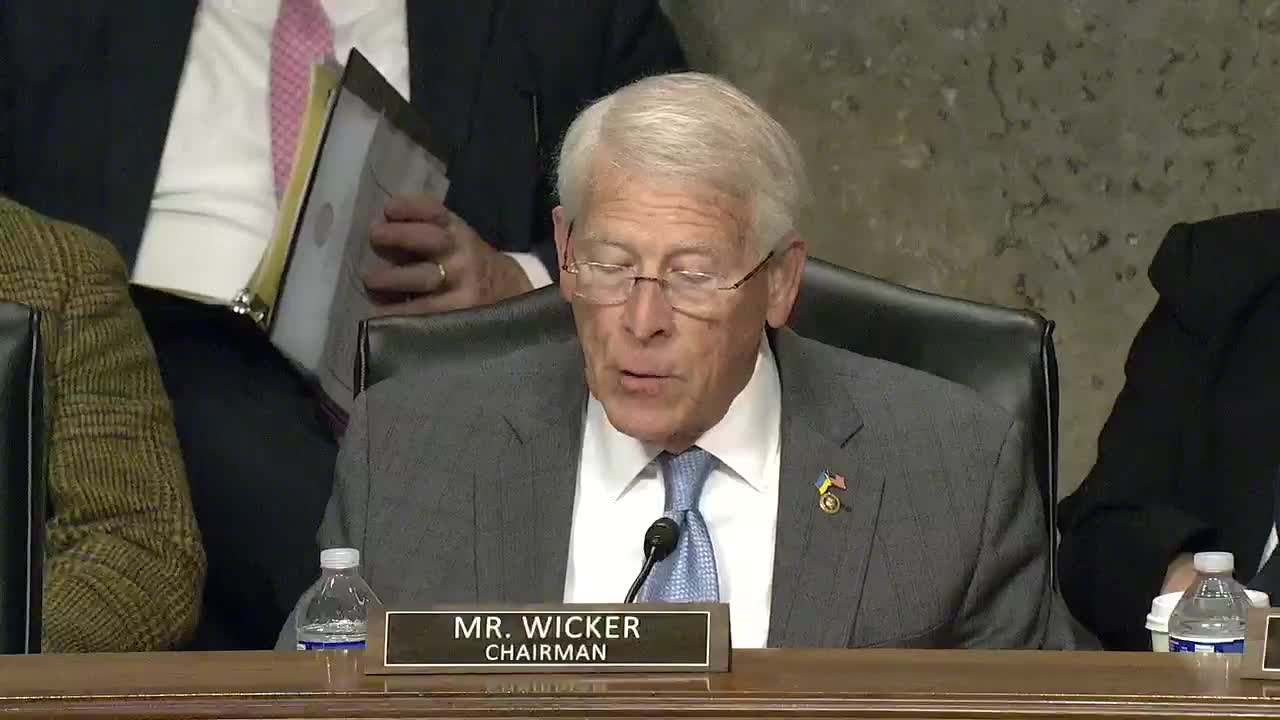Senate discusses drone manufacturing and safety measures post Blackhawk incident
June 05, 2025 | Armed Services: Senate Committee, Standing Committees - House & Senate, Congressional Hearings Compilation
This article was created by AI summarizing key points discussed. AI makes mistakes, so for full details and context, please refer to the video of the full meeting. Please report any errors so we can fix them. Report an error »

The U.S. Senate Committee on Armed Services held a crucial meeting on June 5, 2025, focusing on the Department of the Army's posture in relation to the Defense Authorization Request for Fiscal Year 2026. A significant topic of discussion was the potential closure of key facilities, including Pine Bluff Arsenal, Bluegrass Army Depot, and Red River Army Depot. Secretary of the Army expressed caution regarding these closures, emphasizing the importance of the organic industrial base in sustaining combat operations.
The Secretary acknowledged that while plans are being developed to repurpose these facilities, funding constraints could lead to difficult decisions. "Our organic industrial base is not sufficient for the threats today or in the future," he stated, highlighting the need for a strategic approach to resource allocation. The committee underscored the importance of maintaining a robust industrial base, especially in light of increasing global threats.
Another pressing issue raised was the disparity in drone manufacturing costs compared to competitors, particularly China. The Secretary pointed out that U.S. drone manufacturers often produce drones that are significantly more expensive—sometimes 50 to 100 times more than their Chinese counterparts. This cost imbalance poses challenges for the U.S. industrial base to achieve economies of scale. "We need to figure out how to defend against these low-cost drones and create enough to scale against Russia and China," he urged.
The discussion also touched on the tragic incident involving a U.S. Army Blackhawk helicopter crash that resulted in the loss of 67 lives. Senator Reid emphasized the need for improved communication with the families affected by the tragedy. The Army committed to establishing direct communication with these families, acknowledging the importance of transparency during ongoing investigations.
In conclusion, the meeting highlighted critical issues facing the Army, from potential facility closures to the urgent need for advancements in drone technology and safety measures. The outcomes of these discussions will play a vital role in shaping the Army's future capabilities and its response to emerging threats.
The Secretary acknowledged that while plans are being developed to repurpose these facilities, funding constraints could lead to difficult decisions. "Our organic industrial base is not sufficient for the threats today or in the future," he stated, highlighting the need for a strategic approach to resource allocation. The committee underscored the importance of maintaining a robust industrial base, especially in light of increasing global threats.
Another pressing issue raised was the disparity in drone manufacturing costs compared to competitors, particularly China. The Secretary pointed out that U.S. drone manufacturers often produce drones that are significantly more expensive—sometimes 50 to 100 times more than their Chinese counterparts. This cost imbalance poses challenges for the U.S. industrial base to achieve economies of scale. "We need to figure out how to defend against these low-cost drones and create enough to scale against Russia and China," he urged.
The discussion also touched on the tragic incident involving a U.S. Army Blackhawk helicopter crash that resulted in the loss of 67 lives. Senator Reid emphasized the need for improved communication with the families affected by the tragedy. The Army committed to establishing direct communication with these families, acknowledging the importance of transparency during ongoing investigations.
In conclusion, the meeting highlighted critical issues facing the Army, from potential facility closures to the urgent need for advancements in drone technology and safety measures. The outcomes of these discussions will play a vital role in shaping the Army's future capabilities and its response to emerging threats.
View full meeting
This article is based on a recent meeting—watch the full video and explore the complete transcript for deeper insights into the discussion.
View full meeting